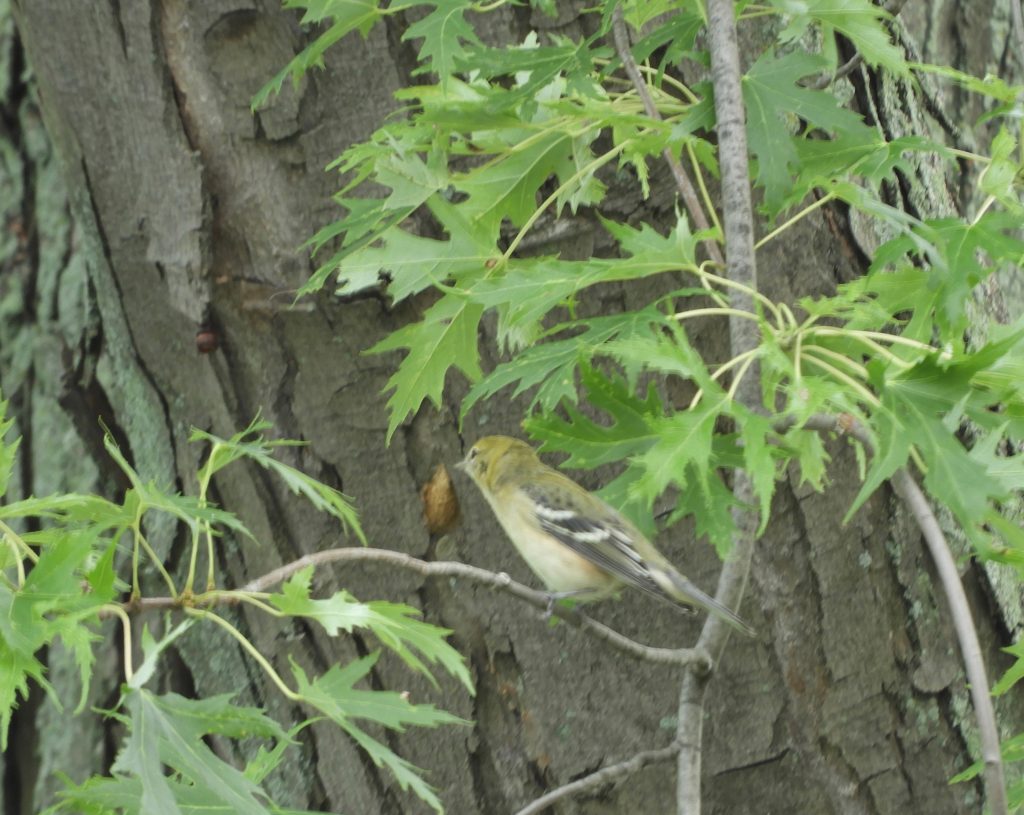
Woodland Cemetery, Burlington ON. August 28 2020. Roger Tory Peterson’s book, A Field Guide to the Birds (first published in 1934 and for decades North America’s bird-identification bible) was, for the most part an invaluable revelation. When I started birding in Canada it was almost alone in shining a light on bird identification mysteries. The only stumbling block was its two-page section on Confusing Fall Warblers. Those few discouraging pages clouded the other 200 of confidence and joy earned in finding and knowing what you were looking at. It was enough to put many people off looking at little birds. The taint has stuck, undermining some birders’ confidence still.
I met with friends this morning to look for migrants of any and all kinds among the trees and shrubs in a large cemetery. The weather has cooled in the past couple of days and many bird species have taken the hint that it’s time to move on.
I felt like a beginner birder today, the trees were hopping with birds, there was too much to absorb in not enough time and it was all moving around. I had no trouble with Red-eyed Vireos, a glimpsed Philadelphia Vireo, many Chipping Sparrows, Black–capped Chickadees, American Redstarts, a Magnolia Warbler or two, a Blue–winged Warbler and Red–breasted Nuthatches, but there were many more active little birds moving quickly, flitting, dropping and vanishing before you could get your binoculars on them. To complicate things, several of them fit right into Peterson’s ‘Confusing’ category: Cape May, Bay–breasted, Pine, Black–throated Green, and Blackburnian Warblers. They were all there, undoubtedly dozens of them, bouncing and fluttering, teasing us. You can usually figure them out given field guide in hand, time, and a reasonable look. But today it was difficult to make certain identifications, my colleagues were more confident and I owe it to them that I was able to latch on to some of those tricky ones.
I managed to get this poor photo, below, of a young female Cape May Warbler. She’s brownish, shows no wing markings and is faintly streaked on the breast.
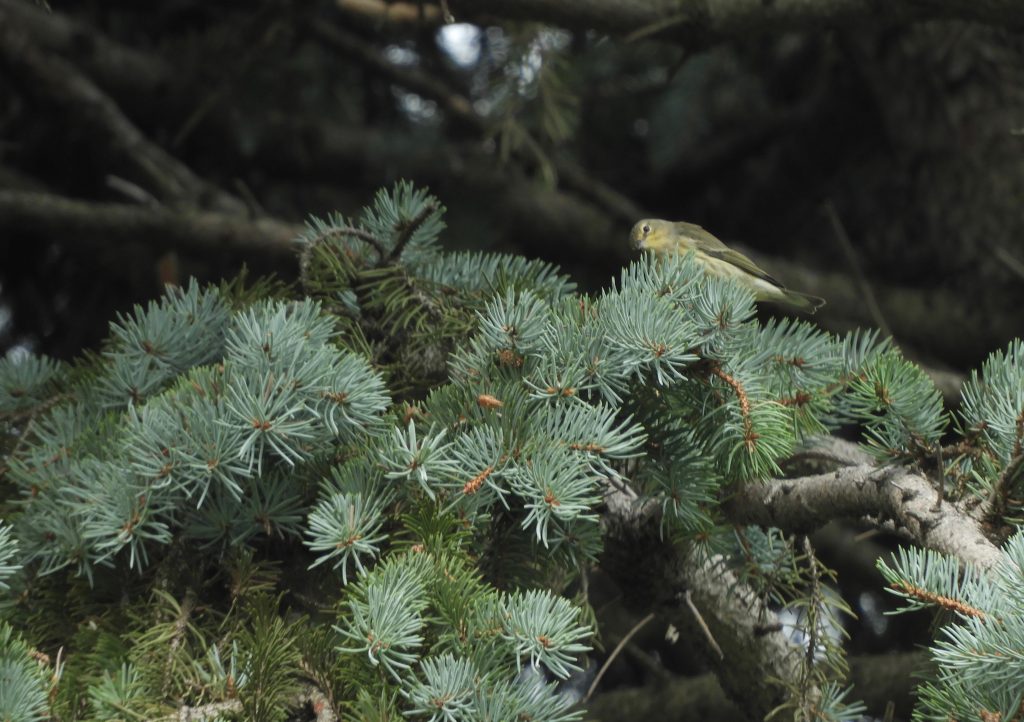
On the other hand, the next two, below, are also Cape May Warblers, both adult males, one in spring, the other in fall. Some quite radical differences, you can see a bit of what Peterson was getting at.
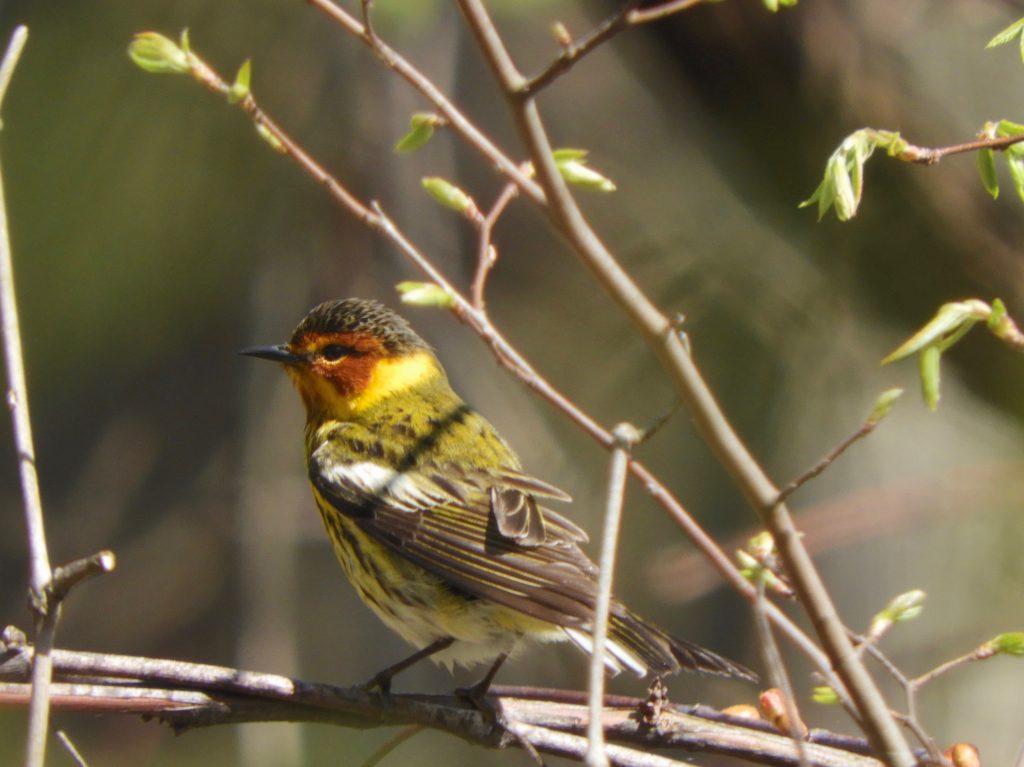
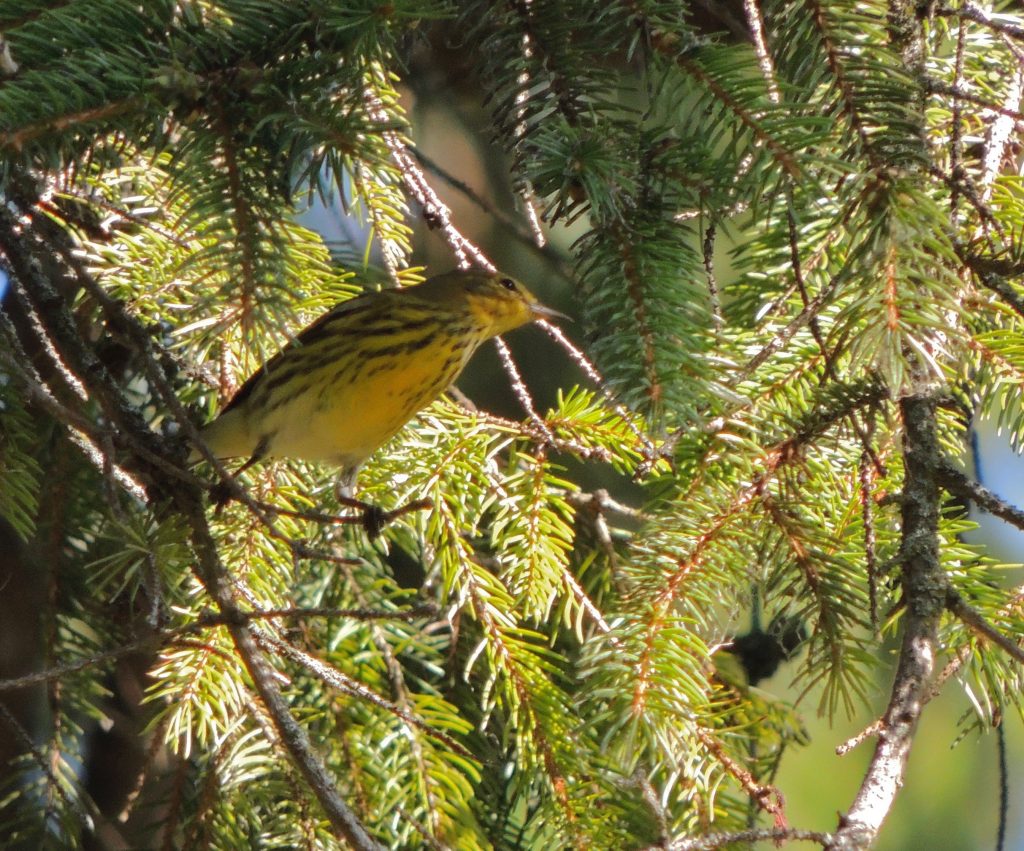
Finally for today, as we were about to head for home, with my head still trying to catch up, we heard a piercing three-note whistle and looked up to see this adult Bald Eagle, no mistaking.
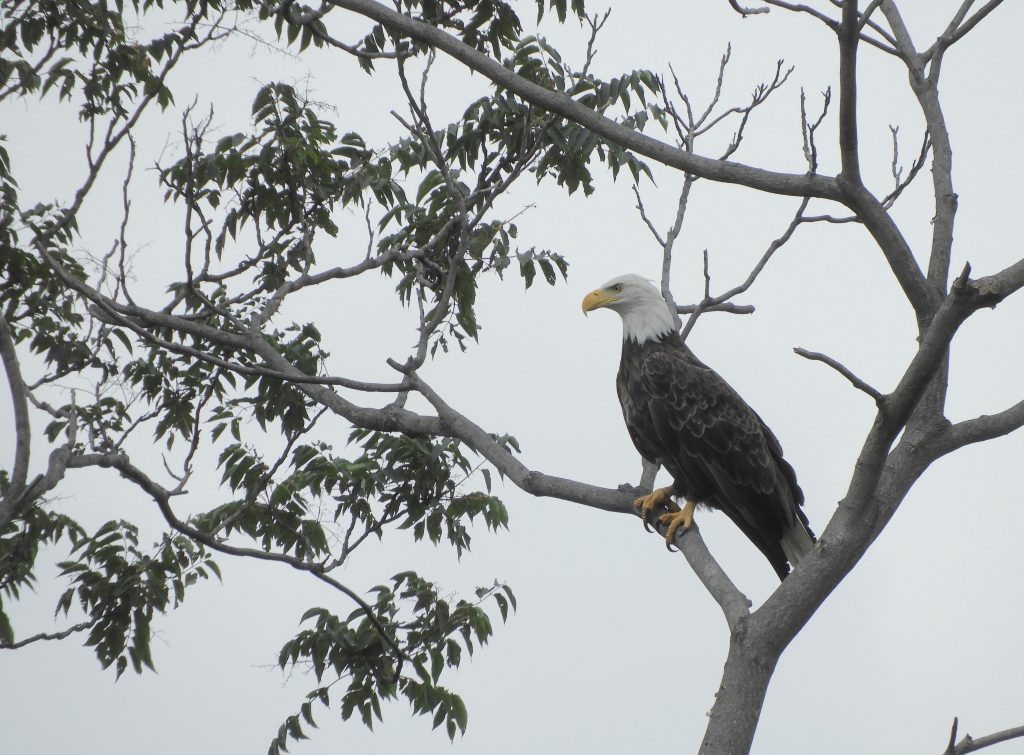
As always, very informative Peter and many thanks for keeping me in the loop. I finally managed to catch up with a European Dipper yesterday morning on our drive back to Spain. Not one but two in the Rio Aragon just north of Jaca in the Pyrenees.